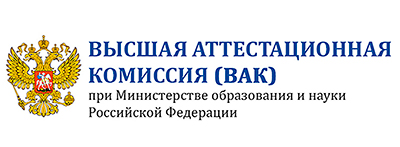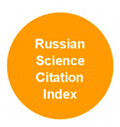Family traditionalism and age-specific nuptiality patterns: what does the example of Karachay-Cherkessia point to?
Аннотация
The paper deals with the relation between traditional family norms and women’s age at first marriage. The study is based on data from Karachay-Cherkessia, a republic of the North Caucasus (Russia), and uses results of a survey among women of reproductive ages conducted there in 2018. It has been demonstrated that traditional family norms, including those empowering elder generations and limiting women’s social role to housework and bringing up children, are rather strong in that region. It is currently assumed that these norms generally correlate with women’s younger age at first marriage. However, our analysis of the data from Karachay-Cherkessia, which used proportional hazard models and logistic regressions, does not fit this assumption. Specifically, it turns out that precisely that ethnic group of Karachay-Cherkessia which shows a higher concentration of traditional family norms also demonstrates a statistically significant tendency towards women’s older age at first marriage. Thus the relation between traditional family norms and the timing of marriage appears to vary more across different societies than is supposed. The consequences of this result for the study of demographic transformations taking place in different countries and regions together with the breakdown of traditional family norms are discussed.
Скачивания
Литература
Agarwala R., Lynch S.M. (2006). Refining the Measurement of Women’s Autonomy: An International Application of a Multi-dimensional Construct. Social Forces, 84(4), 2069-2090. doi: 10.1353/sof.2006.0079
Ahearn L. (2001). Invitations to love: literacy, love letters, and social change in Nepal. Ann Arbor: University of Michigan Press.
Belozerov S.V. (2005) Etnicheskaja karta Severnogo Kavkaza [The ethnic map of the North Caucasus]. Moscow: O.G.I. 302 p. (In Russ.)
Bongaarts J. (1999). The fertility impact of changes in timing of childbearing in developing world. Population Studies, 53(3). 277-289. doi: 10.1080/00324720308088
Burdjak A.Ja. (2007). Primenenie metoda “analiza nastuplenija sobytija” s pomoshchju paketa SPSS [Using the event history analysis method in SPSS]. Spero, 6, 189-202 (In Russ.).
Collier J. (1997). From duty to desire: remaking families in a Spanish village. Princeton: University Press.
Dommaraju P., Agadjanian V. (2008). Nuptuality in Soviet and post-Soviet Central Asia. Asian Population Studies, 4(2), 195-213. doi: 10.1080/17441730802247463
Dyson T., Moore M. (1983). On Kinship Structure, Female Autonomy, and Demographic Behaviorin India. Population and Development Review, 9(1), 35-60. doi: 10.2307/1972894
Gruber S., Szołtysek M. (2012). Quantifying Patriarchy: An Explorative Comparison of Two Joint Family Societies. MPIDR Working Paper WP 2012-017, April 2012. Retrieved from https://www.demogr.mpg.de/en/projects_publications/publications_1904/mpidr_working_papers/quantifying_patriarchy_an_explorative_comparison_of_two_joint_family_societies_4604.htm
Hajnal J. (1965). European marriage pattern in historical perspective. In D.V.Glass, D.E.C.Eversley (Eds.) Population in History. London: Arnold.
Hart K. (2007). Love by Arrangement: The Ambiguity of ‘Spousal Choice’ in a Turkish Village. The Journal of the Royal Anthropological Institute, 13(2), 345-362. doi.org/10.1111/j.1467-9655.2007.00438.x
Karpov Ju.Ju. (2001). Zhenskoe prostranstvo v kul’ture narodov Kavkaza [The female sphere in the culture of peoples of the Caucasus]. Saint-Petersburg: Peterburgskoe vostokovedenie. 419 p. (In Russ.)
Kaser K. (2002). Power and inheritance: male domination, property and family in Eastern Europe, 1500-1900. History of the Family. 7, 375-395.
doi: 10.1016/S1081-602X(02)00109-4
Kazenin K.I., Kozlov V.A. (2017a). Osobennosti brachno-reproduktivnogo povedenija naselenija v Respublike Dagestan: ikh prichiny i social’no-ekonomicheskie posledstvija [Special characteristics of nuptiality and fertility in Daghestan: their reasons and social-economic consequences]. Vestnik Instituta ekonomiki RAN [The Bulletin of the Institute for Economics, Russian Academy of Science], 2, 65-81 (In Russ.).
Kazenin K.I., Kozlov V.A. (2017b). Vozrast materinstva v Dagestane: znachimost’ etnicheskogo faktora v uslovijakh modernizacii [Mother’s age in Daghestan: the role of ethnicity in the process of globalization]. Narodonaselenie [Population], 1, 46-58 (In Russ.).
Lerch M. (2013). Patriarchy and fertility in Albania. Demographic Research, 29, 133-166. doi: 10.4054/DemRes.2013.29.6
Malhotra A., Vannemann R., Kisher S. (1995). Fertility, Dimensions of Patriarchy, and Development in India. Population and Development Review, 21(2), 281-305. doi: 10.2307/2137495
Mason K. O. (1987). The Impact of Women’s Social Position on Fertility in Developing Countries. Sociological Forum, 2(4), 718-745. doi: 10.1007/BF01124382
Mitrofanova E.S. (2019). Entering adult life: North Caucasus in comparison to other regions of Russia. Journal of Social Policy Studies, 17(1), 133-141 (in Russ.). doi: 10.17323/727-0634-2019-17-1-133-141
Molodikova I., Watt A. (2014). Growing up in the North Caucasus: society, family, religion and education. London: Routledge. 202 p.
Morgan S.P., Stash S., Smith K., Mason K.O. (2002). Muslim and Non-Muslim Differences in Female Autonomy and Fertility: Evidence from Asian Countries. Population and Development Review, 28(3), 515-538. doi.org/10.1111/j.1728-4457.2002.00515.x
Pavlova O.S. (2012). Ingushskij etnos na sovremennom etape. Cherty social’no-psikhologicheskogo portreta [Ingush people today. Social-psychological characteristics]. Moscow: Forum. 384 p. (In Russ.)
Pavlova O.S. (2013). Chechenskij etnos segodnja: cherty social’no-psikhologicheskogo portreta [Chechen people today: social-psychological characteristics]. Moscow: Sam Poligrafist. 588 p. (In Russ.)
Sabanchieva L.Kh. (2016). Gender v social’no-politicheskikh processakh v Kabardino-Balkarii (20-e gg. XX v. – nachalo XXI veka) [Gender in sociopolitical processes in Kabardino-Balkaria (from 1920es – to eraly 21 century)]. Nal’chik: KBIGI. 158 p. (In Russ.)
Starodubrovskaya I.V. The crisis of the traditional North Caucasian family in the post-Soviet period and its consequences. Journal of Social Policy Studies, 17(1), 39-56 (in Russ.).
doi: 10.17323/727-0634-2019-17-1-39-56
Tönnies F. (2002). Obshchnost’ i obshchestvo: osnovnye ponjatija chistoj socilogii [Gemeinschaft und Gesellschaft. Grundbegriffe der reinen Soziologie. Russian translation]. Moscow: Vladimir Dal’.
Zakharov S.V. (Ed.) (2018). Russia’s population in 2016: 24th Annual Demographic Report. Moscow: HSE publishing house. 448 p. (In Russ.)
























